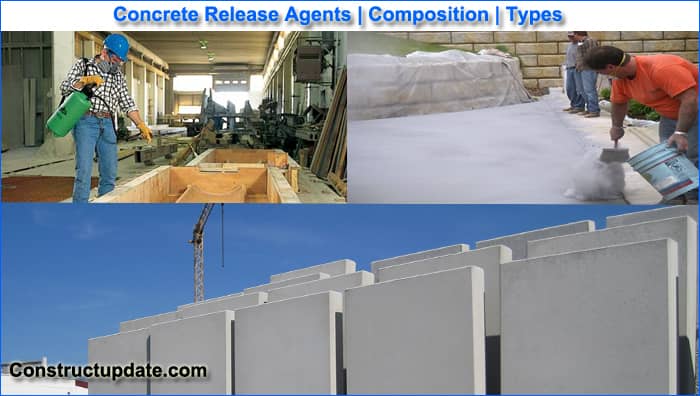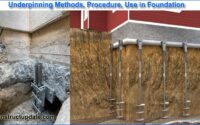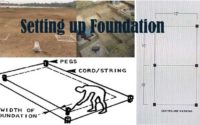Concrete Release Agents | Releasing Agents Composition, Specifications, Types
In the concrete business, concrete release agents are used to remove concrete components from forms and moulds that are often made of plywood, overlay plywood, aluminium, or steel. This article offers more details about concrete release agents such as their types, common issues, composition, and specification.
Concrete release agents are necessary during the production of concrete to prevent the concrete components from sticking to the moulds. Any release agent can be used to release the concrete, albeit not all release agents for concrete work as well as others. Even the concrete’s quality could suffer.

Common problems are:
- Surface voids;
- Concrete stains/discolouration;
- Dusting concrete;
- Sticking concrete.
Composition of Concrete Release Agents
Concrete release agents are made up of a base fluid that has the necessary additives dissolved in it. Mineral oil with or without de-aromatized white spirit, ester/vegetable oil, or water in the case of emulsions are all acceptable base fluids. Typically, fatty acids and/or esters are utilised as separating agents. After the concrete hardens, metal soaps created by fatty acids react chemically with the cations in “concrete water” to create the “predetermined breaking point” between concrete and formwork.
The often-used esters are saponified by the extremely alkaline concrete (pH value 12.9) to create fatty acids and alcohol. The cations in the “concrete water” and the fatty acids interact as indicated. The matrix of the cement contains alcohol. The concrete release agents also include chemicals that reduce pores and shrink holes while also providing temporary corrosion protection for steel formwork.
Modern concrete release agents’ specifications
- Simple separation between formwork and concrete
- Surfaces of concrete free of pores and shrinkage cracks
- Surfaces of light-coloured concrete that aren’t stained
- Clean formwork
- Keeping the formwork safe and making cleaning simple
- Corrosion prevention for steel formwork temporarily
- User safety in terms of hygiene
- Protection of the environment
- Universal applicability
- Cost-effectiveness
- Sustainability
Types of Concrete Release Agents:
- Release agents for concrete forms stop concrete from sticking to the forming surface, which is typically plywood, steel, or aluminium. Three different release agent kinds are accessible in this application: water-based, reactive, and barrier.
- Between the form and the concrete, a physical film is created using barrier oil-based releasing agents.
- Reactive release agents work by interacting chemically with the free limes that are present in concrete. They are chemically active. It produces a soapy layer that hinders adherence. A cleaner release is made possible by the fact that often little to no residue or unreacted product is left on the concrete’s forming surface.
- Water-based release agents are a result of increased attention being paid to safety, health, and environmental issues. As a result, there has been a shift away from petroleum-based goods, leading to the development of new technologies that are predominantly focused on water-based formulations.
Common Concrete Release Agent Defects at Construction Sites:
When utilising release agents, one of the most frequent mistakes is to provide more than is necessary to get the desired results. An airless spray is the most suggested method of application for thin applications.
- All extra oils can be removed with a towel after adding thicker oils with a brush or cloth and extending as far as feasible.
- The application of barrier coatings gives wood or plywood forms a durable surface and can extend their life.
- Three coats of mould oil should be added before the first application of the kind if paint is not being used.





